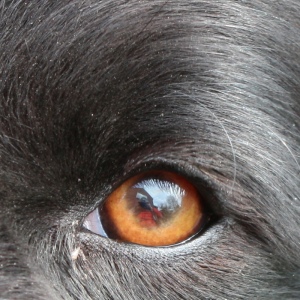The age of trusting the professionals is fading fast. I am not sure anymore what exactly a professional is and the difference between genuine, self-styled and fake, ?
With so much information freely available and shared when we open the gate to “looking for a xyz” we are struggling to recognise authenticity from smart marketing. Smart marketing is duplicating authenticity in their marketing and I am not just referring to fake copiers that take your money and run, but also the pseudo-experts that believe they are expert but maybe not. They have genuine belief in their own level of expertise and self-present as such. How can we measure and qualify expertise?
Perhaps this will be a new qualification?
“Sniffing out authentic”.
“Odour detection for fakery”.
I was pressed into re-designing the website at the end of 2017. I duly scheduled my 3 week Christmas lock-out to knuckle down to this. It requires a strict no interruption policy. Up to that point I had been building sites with the help of straight forward drag-n-dump software, writing the necessities and doodling-up the pics. Good bit of amateur fun. My plans required me to upgrade my skills and I scheduled the new site launch by the end of January. Yay …. Mid May and I can now say the top is in view. I think. Or it may be one of those false summits loathed by any mountain teams, what you see is a hump, hiding the summit.
A week before Christmas I thought I knew enough to rebuild and step up a level, a week after I knew I didn’t. Wandering around the thousands of well-marketed and professional looking options that wanted my lifelong servitude I realised my level of knowledge was sufficient to show me what I was lacking. I had no enthusiasm for learning new languages or more complex system, but I did have a good idea of what I wanted and what I could afford financially and time investment.
My seeking hours started to filter out the folk that I “liked”. Not in the facebook sense, but in the connection to the design of their material and emphasis on the values of what they were promoting.
Designers can be externally hired and skilled to be able to communicate any type of message their client wants. But there is also a message in the words and visual appeal that is more than a single strategy, it oozes the ethos of the people behind the business.
My cookie-manager went bananas trying to work out want my site visiting was indicating about my personal interests. I was following a trail of recommended WordPress sites. These are not just blogger folk hosted by WP, but sites built in the style of WP, raising beyond 25% of the sites we now use.
Wouldn’t you just want to work with these people: https://www.mambomedia.tv/contact/?
By trailing around with no particular urgency I was able to get a feel for the body of work the sites presented, not a single page, not an impressive landing page (the first page you hit), but how the site unfolded, how easy it was to take another step, and how much I wanted to explore.
I think we all have a natural detection process that we can listen to without an expert telling us what to listen to. We just need to prod it awake, and then listen to it.
This detection process needs to be on full alert in the dog world. Along with the well-intentioned newly-fresh businesses there is a malignant growth of cash-croppers seeking the vulnerable. The pet market has never suffered a recession. It is considered one of the prime areas to “make money whilst you sleep”.
My detection process in this area is well tuned, I can spot the imitators re-selling a process or product. I see the cherry-pickers attending the events to skim off and re-package the money-generating ideas. When examined on closer detail they simply do not have the skill or experience to apply or teach. My own ideas, creativity and well-intentioned advice has been completely distorted and result in abuse to dogs by imitators who had not learned the process with diligence or understanding.
It reminds me of the training protocol where the dog is taught to copy a person, but the dog has not actually travelled the learning steps to perform the activities, just jumped to the outcome. When this outcome is tested they have no learning stages that were wrapped in application problem solving to call upon. There is little flexibility or ability to tailor the copied behaviour to new situations.
Consider this:
A new product should be make your life easier, not try to replace expertise.
This is from the software engineers but just as easily applied to new dog stuff. A head collar does not replace taking responsibility for training your dog.

Imitators will fail the test of adapting and generalising.
They will not be able to meet the needs of the non-standard situation. There is an absence of depth of understanding. The way a behaviour is learned is always visible.

Look beyond the landing page, the immediate call-you-in advert.
Seek the body of work of the organisation, the person or the team involved. Explore and develop a feel and question your personal trust-pilot. Look for their history, their experience, their priorities and biases. The first dog we train, trains us as a trainer.
If you’d like to enter a discussion please join on the main website for the richer comments!